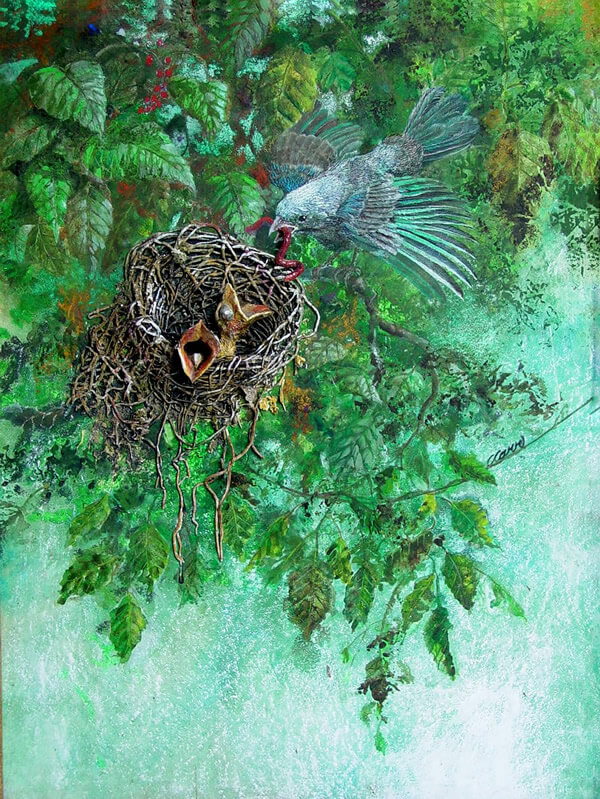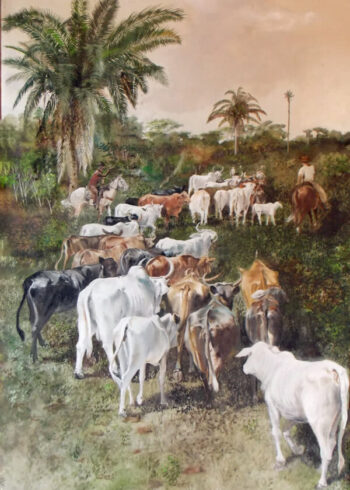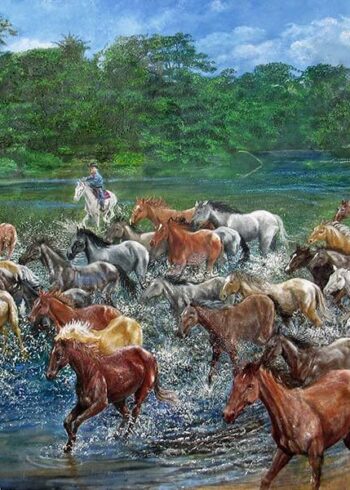Prints of this painting are not available.
Human mothers sometimes wish they had wings and could just fly away, leaving the gaping, squawking little ones even for a short time. Parenting for us lasts years, sometimes decades. We even refer to the “empty nest syndrome” to lament the time when bringing the worm to gaping mouths is over but then, we feel sad and lonely.
Description
Human mothers sometimes wish they had wings and could just fly away, leaving the gaping, squawking little ones even for a short time. Parenting for us lasts years, sometimes decades. We even refer to the “empty nest syndrome” to lament the time when bringing the worm to gaping mouths is over but then, we feel sad and lonely.
The blue-gray tanager has no such remorse. It is an annual event wherein one to three, usually two, dark-marked whitish to gray-green eggs are laid in a deep cup nest in a high tree fork or building crevice. Incubation by the female is 14 days with another 17 to fledging. The breeding habitat is open woodland, cultivated areas and gardens. The blue-gray tanager lives mainly on fruit, but will also take some nectar and insects. This is a common, restless, noisy species, usually found in pairs, but sometimes small groups.
The message in the painting is vulnerability. How helpless those tiny birds are, totally dependent on the parent to bring them their food. They have faith that it will miraculously appear to be dropped into their gaping beak, and hope that the provider does not forget or simply fly away and leave them to die. But the parent is faithful and hopeful as well and knows the job is to give, expecting nothing in return except the joy of watching the little one hop onto the edge of the nest and fly away.




